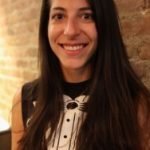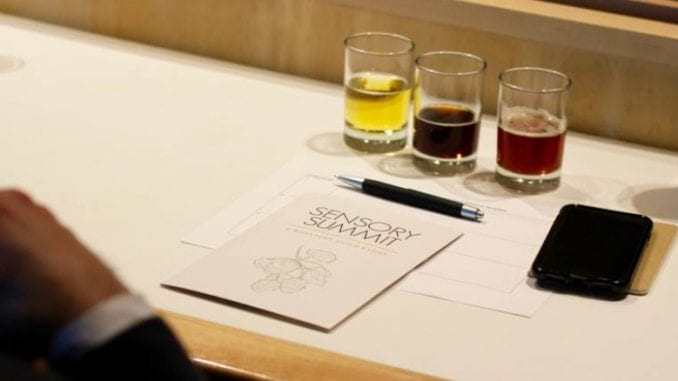
When we say we drank bean water, we’re not just using a euphemism for coffee—we mean bean water. That, and delicious cheeses, different types of beer, and seasonal teas were all part of our experience at this year’s Sensory Summit.
BY ASHLEY RODRIGUEZ
BARISTA MAGAZINE ONLINE
Photos courtesy of the Specialty Coffee Association
“This is the best event we do,” Joe Marrocco of Cafe Imports and member of the Roasters Guild Executive Council whispers as we watch a lecture on extraction rates of conical versus flat bed brewers. The lecture, which is being given by the director of the UC Davis Coffee Center and chemical engineering professor, William Ristenpart, is just one of a series of talks, discussions, and interactive tasting experiments happening at this year’s Sensory Summit. We previewed Sensory Summit a few weeks ago, but we were nowhere near prepared for how interactive and informative the two-day event would be, and how many strange and delicious things we’d taste, smell, and enjoy.
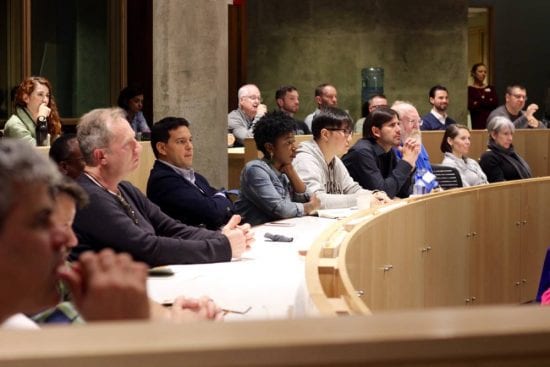
Sensory Summit, which is hosted by the newly unified Roasters Guild, kicked off January 25 at the Sensory Theater inside the Robert Mondavi Institute at UC Davis. After opening remarks, Professor Maria Marco and Sacha Laurin, head cheesemaker for Winters Cheese, talked about fermentation in cheese, and discussed how flavor is built. Professor Marco talked about how fermentation is essentially a happy mistake, saying “fermented foods are an accident … we wouldn’t have the flavor of chocolate if it wasn’t for fermentation.” She then showed slides that confounded and amazed the audience, including one of a cheese rind that had been eaten by cheese mites! Attendees then heard from Sacha, who explained how she makes her cheeses, stating that every cheesemaker has some proprietary blend of bacteria they add to make their cheese unique. The group tried five different cheese from Winters, representing various cheesemaking processes and fermentation methods.
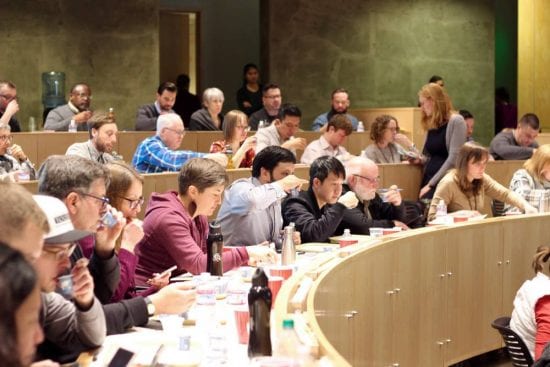
The next day included a lecture on product design, hosted by Hoby Wedler, co-founder of Senspoint Design, and Richard Harrod, head designer for Breville. The two broke down the importance of the sensory experience we have with the products we use daily; Hoby played two different clips of car doors closing and asked the audience, “Now, which of these sounds like it belongs to a luxury car, and which belongs to an economy car?” Richard passed around different Breville products, and talked about how small, barely noticeable things like a brew basket clicking into place makes a world of difference in a customer’s perception of the usefulness of the product. “Consumers want a product that shows you how it works,” said Richard. “We do our best work when the consumer doesn’t have to complain.”
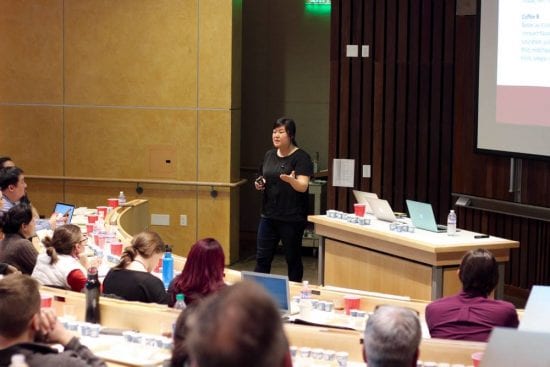
After that discussion, we launched into a workshop on developing personal sensory skills, hosted by Scott Frost, a postdoctorate scholar at UC Davis, Pauline Lestringant, Ph.D. candidate, and Juliet Han, head roaster for Blue Bottle Coffee in Oakland, Calif. In this workshop, attendees had to taste things and try to determine why and how they made the decisions they did. In the beginning, everyone was given three different crackers and had to determine which one was different, and what cues they noticed that told them that one of them was different. Then, attendees applied this protocol to tasting coffee, and had to sort seven coffees based on processing method.
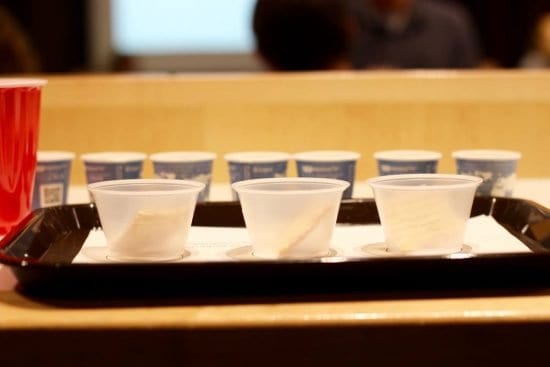
One of the most interesting sensory experiences happened during the lecture on tea harvesting hosted by Albert Robbat, a member of the chemistry faculty and director of the Tufts University Sensory and Science Center. He discussed the effects of climate on flavor, and presented two tastings of the same tea—one harvested in early spring, the other harvested after hurricane season in South Carolina. “Early spring tea is thought to be the best tea,” Albert said, and the audience likewise reported floral and light flavors in the early spring tea, while the late harvest tea tasted fishy and barnyard-like. “This is the plant trying to protect itself,” Albert said, noting that the flavors developed after the heavy hurricane rains.
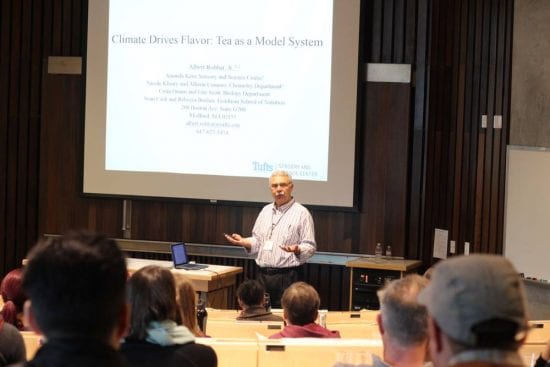
The day continued with a lecture on conducting surveys and determining consumer preferences, and then the group traveled to Track 7 Brewery in Sacramento to taste beers and explore how the ingredients of beer affect flavor. The next day, attendees tasted many of the flavor notes on the Specialty Coffee Association (SCA) flavor wheel, using the World Coffee Research lexicon to create specific flavor experiences. Emma Sage, science manager for the SCA , teamed up with Kardi Koppel, assistant professor in the department of food nutrition dietetics and health at Kansas State University, to guide attendees through the flavor wheel, tasting delicious things ranging from white grape juice (to represent “floral” on the flavor wheel) to more interesting items such as water from a can of green beans (to represent a “dark green” flavor).
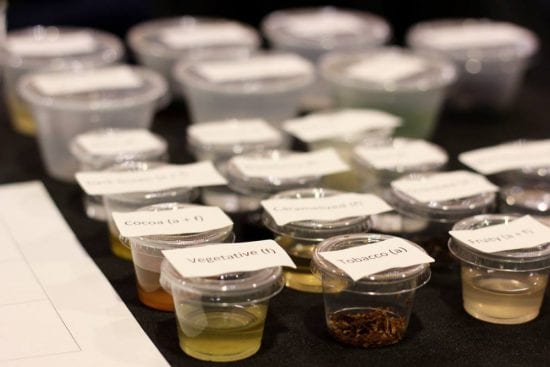
Afterward, Professor Ristenpart debunked myths long held in the coffee world (like the accuracy of the Brewing Control Chart invented by Earnest Earl Lockhart) by explaining his methodology in an experiment to see if the shape of a brew basket affected the extraction rate of coffee (it does—extraction was higher, but less even, on the conical brew basket). In the afternoon, attendees explored the parallels between coffee and beer extraction again with Professor Ristenpart and Joe Williams, the Pentair graduate fellow and the Sierra Nevada Brewing Company-endowed brewer at UC Davis. Afterward, Peter Giuliano, chief research officer for SCA, paired up with Dr. Rosane Schwan from UFLA in Brazil to talk about scientific innovation in coffee processing, and hear about Dr. Schwan’s research regarding experimental processing methods.
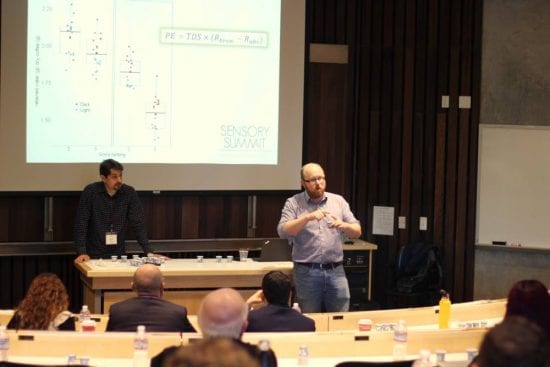
All the while, coffee professionals engaged in critical discussion and asked hard questions, pushing everyone to think about the future of coffee. Sensory Summit is by no means cheap—entrance to the event is around $1,000—but the lectures and discussions that take place at Sensory Summit are some of the most groundbreaking and innovative discussions happening in the science of coffee.

